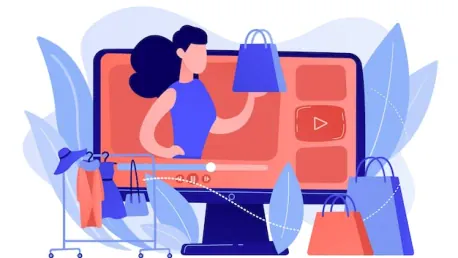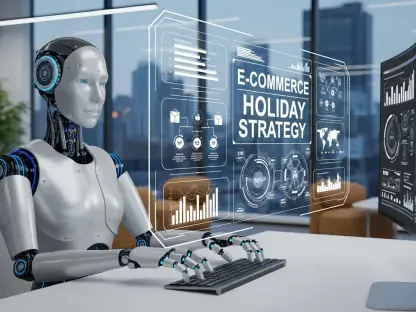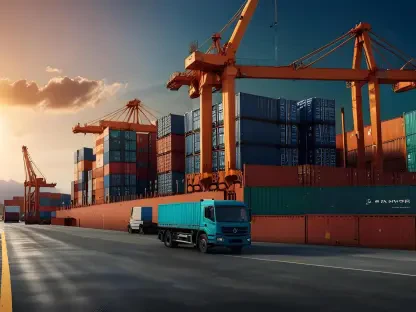Urban retail in India is experiencing a transformation characterized by the rapid delivery of fashion items within incredibly short time frames. This shift is largely driven by consumer demand for immediate gratification and the competitive strategies of e-commerce companies striving to cater to this need. By leveraging innovative logistics and cutting-edge technology, these companies are reimagining the traditional e-commerce experience, which previously focused on variety and extensive catalogs.
Key Players and Their Strategies
Several companies have emerged as key players in the rapid delivery sector of fashion e-commerce. Startups like Slikk Club and Blip are leading the way with their innovative approaches, while established giants like Myntra are also making their mark with initiatives like MNow. These platforms combine local warehouses, hyperlocal offline stores, and dark stores to ensure quick and efficient inventory turnover. The goal is to stay relevant with immediate trends and meet the high expectations of urban consumers who value convenience and speed.
For example, Slikk Club has optimized its return and reorder process by maintaining total control over its inventory. This allows for instant pickups and refunds, closing the loop within the same hour and addressing one of the biggest pain points in online fashion shopping. Similarly, Myntra utilizes its extensive infrastructure and predictive algorithms to enhance delivery speed without compromising on the variety of selections offered. This approach has led to a noticeable reduction in return rates and an increase in customer satisfaction.
On the other hand, smaller yet innovative players like Rocketzone and Blip employ unique strategies to carve out their niches. Rocketzone limits its stock-keeping units (SKUs) to meet the majority of demand efficiently, focusing on a more streamlined product range. Blip, however, functions as a marketplace for live drops, integrating offline retail to speed up delivery times. By collaborating with physical stores and using last-mile logistics, Blip minimizes dependency on central warehouses and positions itself as a leader in real-time delivery.
Addressing the Challenges of Returns
One of the biggest challenges facing online fashion retailers is the notoriously high rate of returns. To combat this, companies are innovating their return policies to make the process more customer-friendly and efficient. Instant pickups, quick refunds, and seamless reorder processes have become critical components of their business models. For instance, Slikk Club’s approach to controlling inventory allows for rapid handling of returns, minimizing inconvenience for the consumer.
Myntra, with its advanced infrastructure, mirrors this strategy by integrating predictive algorithms and dark stores. These dark stores, which are smaller warehouses located within city limits, facilitate quicker turnover and replenishment of stock. This approach not only speeds up delivery but also helps manage returns more effectively. Early results from these initiatives have shown a trend toward reduced return rates and an increase in customer loyalty.
Blip employs a different but equally effective strategy by partnering with local physical stores, allowing for returns within a two-hour window. This hybrid model of online and offline integration reduces the logistical burden and enhances the consumer experience by making returns nearly as instant as deliveries. Rocketzone, with its limited SKU range, can cater to the majority of its customers’ demands while managing returns more efficiently due to its focused inventory approach.
Innovative Business Models
The advent of instant fashion has given rise to several innovative business models, each aiming to target urban consumers’ willingness to pay for convenience and speed. For instance, Shoemato has carved out a niche by offering synchronized trials for footwear across multiple brands within an hour. This unique service layer sets it apart and provides a distinctive consumer experience that goes beyond just delivering products quickly.
Blip’s marketplace model stands out for its emphasis on live drops, which creates a sense of urgency and excitement among consumers. By collaborating closely with physical stores, Blip ensures that products are delivered in real time and returns are handled swiftly, minimizing warehouse dependency. Rocketzone, though it offers a limited SKU range, meets demand efficiently by focusing on the most popular items that urban consumers are likely to purchase.
The overarching theme among these companies is a commitment to logistical innovation. Whether through hyperlocal warehouses, predictive algorithms, or partnerships with offline retailers, the focus is on enhancing the overall consumer experience. The ultimate success of these models will depend on their ability to scale sustainably and manage costs while maintaining the speed and convenience that consumers have come to expect.
The Future of Urban Retail
The landscape of urban retail in India is undergoing a remarkable transformation, with the ability to deliver fashion items at unprecedented speeds becoming a defining feature. This rapid delivery trend is propelled by a growing consumer appetite for instant gratification, where shoppers want their purchases immediately rather than waiting days or weeks. E-commerce companies, recognizing this shift in consumer preference, are competing fiercely to meet these demands and gain a competitive edge.
By utilizing innovative logistics solutions and state-of-the-art technology, these companies are fundamentally rethinking the e-commerce model. Traditionally, e-commerce was focused on offering vast selections and extensive catalogs, allowing consumers to browse a wide array of products. However, the current focus has shifted towards not just offering variety but ensuring speed and efficiency in delivery. This requires the integration of advanced algorithms, real-time tracking systems, and optimized supply chains to ensure that the consumer experience is streamlined and meets the demand for rapid delivery.









